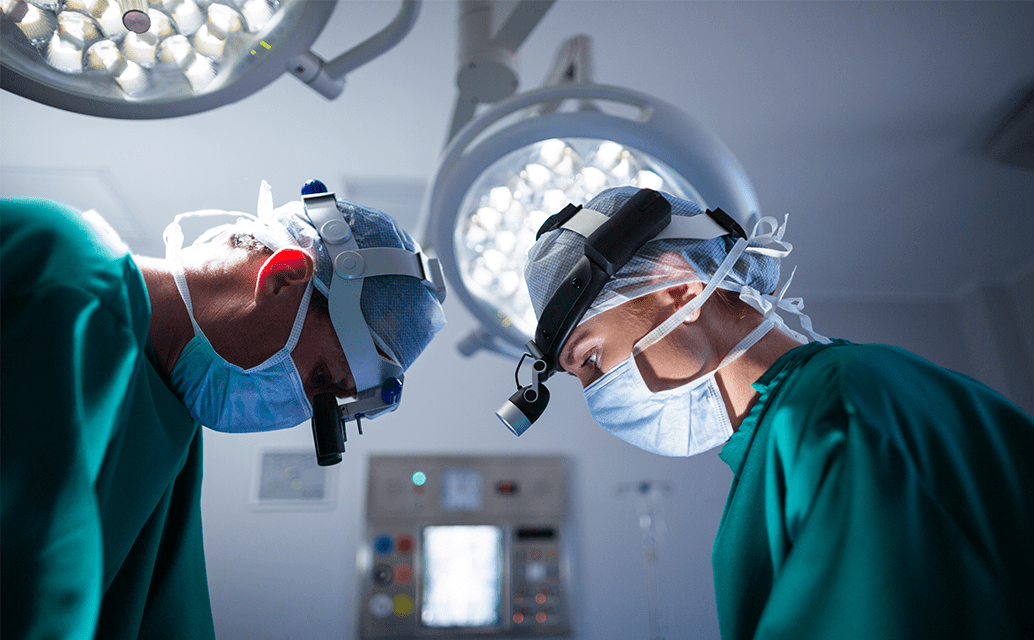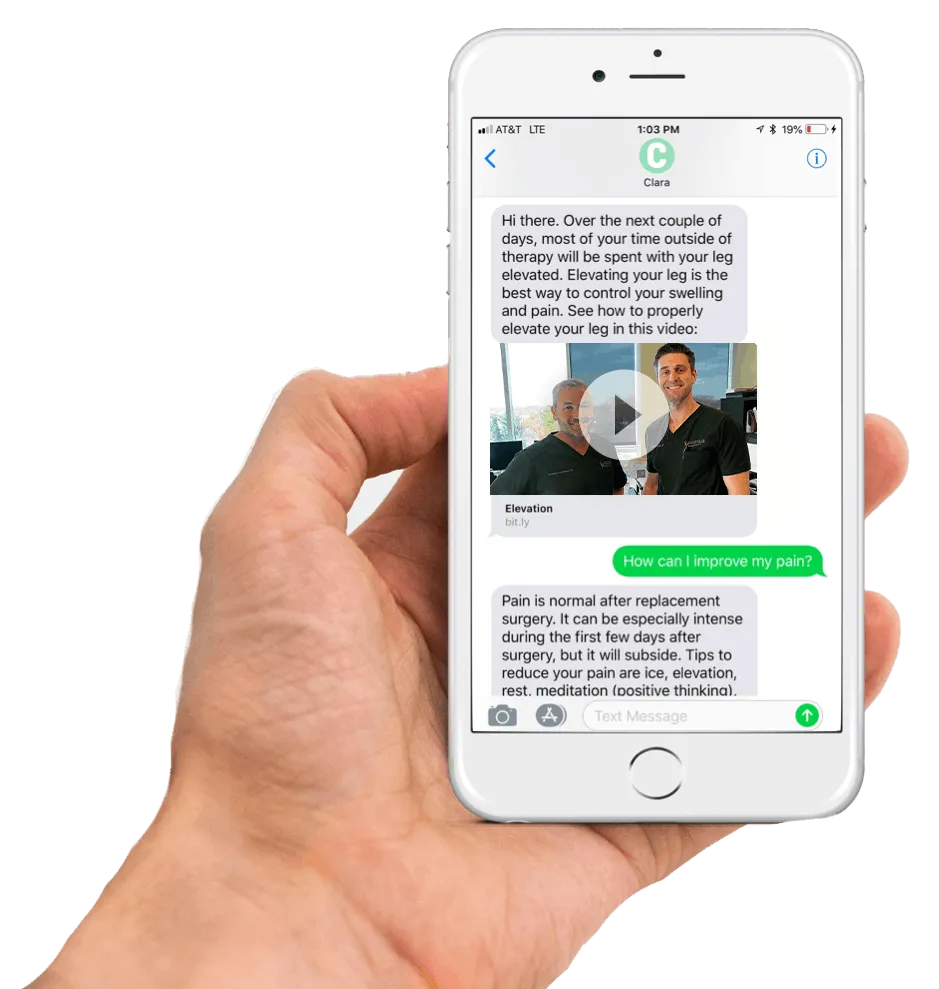
Preparing for Surgery
We believe exceptional results start with exceptional patient care, so our team makes sure every patient receives the highest possible level of personalized and compassionate care in the region.
At Louisville Hip & Knee Institute, we use the latest minimally invasive surgical techniques to get patients moving again in less time, and with less pain, than traditional surgical methods. See below to prepare for your procedure.
Before Surgery
What does hip arthritis feel like?
- Pain in the groin or front of the hip
- Pain radiating down the front of the thigh and shin
- Difficulty putting on socks and shoes
- Difficulty getting into and out of the car
- Difficulty when standing from a chair
- Pain while lying in bed
- Weakness of the hip muscles and limping
What does knee arthritis feel like?
- Pain in the knee, thigh, or calf
- Pain radiating down the front of the shin
- Difficulty bending the knee with a grinding sensation
- Difficulty with stairs
- Difficulty getting into and out of the car
- Difficulty when standing from a chair
- Pain while lying in bed
- Weakness of the quadriceps muscles and limping
- Feeling like the knee is unstable or “giving-out”
When should you consider hip or knee joint replacement?
There is no textbook answer to this question. The answer lies within each person on an individual basis. The correct time is when the pain is severe and prevents you from enjoying normal life activities. Traditionally, orthopaedic surgeons have encouraged patients to wait as long as possible before having surgery. With new implant designs and improved longevity, patients can have hip or knee replacement earlier, before losing valuable years “waiting” until they were older.
What should you expect from hip or knee replacement?
The vast majority of patients undergoing hip or knee replacement experience good results with elimination of pain, increased flexibility and return to normal activity. Data we currently have from hip and knee replacements performed 15-20 years ago show us that survival rate is approximately 95% at 15 years and 70% at 20 years. With the current improved hip and knee replacement implants, expected survivorship rates at 20 years are greater than 95%. Hip and knee replacement is, in fact, one of the most successful surgeries in all fields of medicine. It has proven to have a very high patient satisfaction rate with a very low complication rate.
What should you do to prepare for hip or knee replacement?
Once you have decided to discuss anterior approach hip replacement, partial knee replacement, or total knee replacement, call our office for a consultation date. If you have a date already, make arrangements for time off work. The duration of time will vary from person to person and specific occupation. It is also preferable if you have someone with you after surgery. This is only necessary until you are mobile enough to be independent. If you smoke, please stop immediately. Smoking significantly increases your surgical risks and complications.
Bactroban Nasal Ointment
We will be giving you a prescription for Bactroban (Mupirocin) ointment to apply to your nasal passages to prevent staph infections during surgery.
Directions for use: Apply generously inside each nostril with a separate Q-tip for each nostril and each application. (you should be using 2 Q-tips for each application) This is done twice a day starting 5 days before your surgery, so that you finish the last application the night before surgery.
Hibiclens Body Wash
This is given to also help reduce skin bacteria at the incision site. Wash the affected body part (entire limb) once or twice a day for 5 days prior to surgery. You can also use the morning of your surgery.
Post operatively we recommend that you use an antibacterial soap to gently clean your incision. You will be allowed to shower 24-48 hours after surgery and begin washing the incision. DO NOT take a tub bath or soak the incision for 6 weeks post-operatively.
After Surgery
The Incision
Your incision will be closed with absorbable suture under the skin. The top of the incision is covered with “glue” called Dermabond which provides a watertight seal. The dressing that is placed in the operating room will stay for 1-2 weeks, depending on the dressing that is used. You will be allowed to shower with the dressing and will be given specific instructions on the day of surgery. You will be allowed to shower immediately after the dressing is removed, allowing water to run over the incision. Please do not sit in a bath, hot tub or pool for 6 weeks after surgery.
Swelling/Bruising
It is normal for the operative leg to swell after surgery. You may even have swelling in the thigh and past the knee into the ankle and foot. It is a good idea to wear compression stockings for the first 2-3 weeks to help control the swelling and improve circulation. If the swelling becomes severe or the calf painful, please call the office because it could be the sign of a blood clot. It is also common to have bruising along the side or front of your thigh and possibly into the calf. This may even be extensive bruising which will resolve (go away) after a few weeks. This may extend to the knee as well but will resolve and is a normal expectation after surgery.
Physical Therapy
You will get up and walk within hours after surgery. They will start you walking with the aid of a walker and graduate to crutches or cane as your balance and strength improve. Unless told otherwise, you are allowed to put as much weight on the artificial hip or knee as tolerated. There will be no dislocation precautions, so you are allowed to bend, squat and twist as comfort allows. You may sleep on your stomach or side if you prefer. Therapy will be arranged to come to your home after discharge.
Restrictions
You are allowed full weight-bearing and have no dislocation precautions. Refrain from working out in the gym, golf, tennis, yoga, Pilates or any other exercise other than walking for 6 weeks. No climbing ladders or lifting more than 50 lbs for the first 6 weeks as well. No high impact activities such as running, jumping, skiing for 3 months to allow the implants to fully heal to bone.
Follow Up
Your first follow up appointment in the office will be 6 weeks after surgery unless otherwise specified. Our office typically does a telemedicine visit 2 weeks after surgery. It is typical to see one of our physician assistants for the telemedicine and 6 week appointment unless there are problems or issues you want to address. Our surgeons are in constant communication with the physician assistants.
Surgical Risks
Infection
Any time an incision is made and the inside of the body exposed, an infection can occur. You will receive antibiotics on the day of surgery to prevent a surgical wound infection from developing. If you have a body mass index (BMI) over 40, your risk of infection is significantly increased and weight loss is recommended before proceeding with hip or knee replacement surgery. If an infection develops around an artificial hip or knee, you will require another surgery to wash out the wound and exchange some of the components. You will be on IV antibiotics for 6 weeks after that surgery and followed by infectious disease physicians. If the infection is not cured, the implants may need to be removed for a period of 8-10 weeks with another course of IV antibiotics. Re-implantation occurs after this period, but recovery is delayed significantly.
Bleeding
Most patients undergoing hip and knee replacement will not lose enough blood to require blood transfusion. If you develop a large collection of blood under the skin (hematoma), you may have to return to the operating room to have it evacuated (removed).
Nerve Injury
It is extremely rare to have a motor nerve injury during anterior approach hip replacement. The main nerve at risk is the lateral femoral cutaneous nerve, which gives you sensation on top of the thigh. This nerve only provides sensation and does not control muscle function. This nerve is rarely permanently injured. Some patients will have numbness on top of the thigh after surgery. This area is usually small and will continue to decrease in size over 2-3 months. After knee replacement surgery, you will have a small numb area to the outside portion of the knee. The genicular nerve passes under the patella (knee cap) and is unavoidable during any incision in the front of the knee. This area will decrease in size over time.
Leg Length Inequality
This is one of the most common patient complaints following traditional hip replacement surgery. The anterior approach, which is utilized by our surgeons, addresses this issue by using fluoroscopic x-rays in the operating room to ensure equal leg length while adjustments can still be made. Even with x-ray assistance, small leg length differences can occur but are rare.
Dislocation
Dislocation can occur with extremes of movement, especially during the first 2-3 months after surgery. The risk of dislocation is significantly reduced using the anterior approach to the point that no dislocation precautions are used after surgery. If a dislocation occurs, you will have to return to the hospital to have your hip put back in place.
Fracture During Surgery
It is possible to fracture the femur bone while implanting the femoral stem of the artificial hip. The component is wedged tightly into the canal of the femur taking care not to use too much force, but on occasion, a crack in the bone will occur. If this does occur, we can expect the bone to heal without problem. If this happens, restrictions may be placed on weight bearing after surgery. Fractures can also occur during knee replacement surgeries but these are extremely rare.
Blood Clots
A blood clot, or deep vein thrombosis (DVT), is a known postoperative complication of joint replacement. If a DVT develops, it can travel to the lungs causing a pulmonary embolus (PE) which is life threatening. All patients after hip replacement are placed on blood thinners for this reason. You will have compression stockings and leg compression boots in the hospital to increase circulation. Symptoms of DVT/PE include new or unusual leg or calf pain, chest pain and shortness of breath. If you experience any of these symptoms at home, please consult with a medical doctor.
Increased Risk for Smokers
Smoking greatly increases your chances of infection, wound complications, and deep vein thrombosis. Smokers also are at increased risk for pulmonary complications in the hospital. If you smoke, it is in your best interest to stop before considering surgery.
Increased Risk for Obese
If your BMI is over 35, your risks of surgery are increased. Patients with BMI over 40 have extreme obesity and are at very high risk. Complications that are seen in obese patients at increased rates are wound dehiscence (pulling apart), infection, blots clots (DVT), dislocation, fractures, implant loosening, prolonged hospital stay and poorer overall satisfaction rates. Your wound may be closed with non-absorbable suture due to high dehiscence rates and a special vacuum dressing may be applied which stays on for 2 weeks after surgery. If your BMI is above 45, you will not likely be a candidate for surgery.


